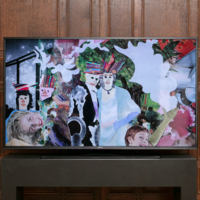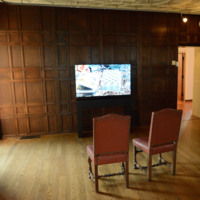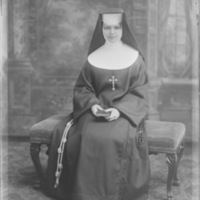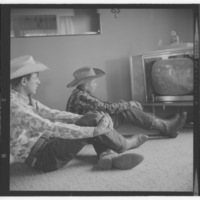Anja Sieger
As in improvisational artist, Anja Sieger often uses “divination,” or the employment of physical objects to unveil helpful knowledge from one’s unconscious. The most well-known form of divination in the western world is the tarot. Many important art movements, including the Pre-Raphaelites, Surrealists, and Fluxists, were heavily influenced by tarot. In this project Sieger decided to treat the UWM Libraries’ Digital Collections as if it were a tarot deck.
Tarot decks consist of 78 cards. For each card, Sieger researched the archetype unique to it, especially as presented in the most traditional Rider-Waite and Marseilles tarot decks. She would “sum up” that archetype into searchable phrases and see what images would be “pulled” from the Digital Collection’s search engine. From the search results, she would then choose one and sometimes two photos to inform her own deck.
Sieger’s deck is unique not only for using the Digital Collections, but also for ensuring that every card features a hat, as she appreciates a good hat.
Tarot and modern playing cards are siblings. Both tarot and playing cards have four suits of ace through tens and court cards. To reflect the different suits, Sieger used the following mediums:
Coins (or diamonds in playing cards) were drawn using oil pastels to reflect an earthly physicality. In Sieger’s deck they are known as the “Helmets.”
Swords (spades in playing cards) were drawn in gray graphite to represent the gray matter and gray areas of thoughts and ideas. In Sieger’s deck they are “Crowns.”
Cups (hearts in playing cards) were painted with watercolor to convey a “swimming in emotion.” In Sieger’s deck they are “Fascinators.”
Wands (clubs in playing cards) were drawn, cut out and collaged from paper scraps to represent action. In Sieger’s deck they are “Stetsons.”



